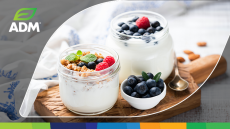Sweet foods contain hidden salt risks
salt content on some sweet products such as popcorn, cereals and
hot chocolate, sparking calls for reformulation and improved
labelling.
The Consensus Action on Salt and Health (CASH) has published new research this week to mark Salt Awareness Week 2008, which highlights the health risks posed to British children because parents are confused over salt content.
"Many parents know that their children should ear less salt than adults" said Jo Butten, CASH nutritionist.
"But they are still confused by labelling that does not clearly state the salt content for a realistic portion and they do not expect sweet foods such as cakes, muffins, puddings and breakfast cereals to contain high levels of salt."
Numerous scientists are convinced that high salt intake is responsible for increasing blood pressure (hypertension), a major risk factor for cardiovascular disease (CVD) - a disease that causes almost 50 per cent of deaths in Europe.
In the UK, Ireland and the USA, over 80 per cent of salt intake comes from processed food.
Reduction of salt in these products represents a major technological and safety challenge to producers.
According to the UK government's Scientific Advisory Committee on Nutrition, four to six year olds should eat no more than 3g of salt a day, which is half the adult limit.
One to three year olds should have no more than 2g a day, and seven to 10, no more than 5g a day.
CASH's research found that, a single portion of Butterkist Butter Flavour Microwave Popcorn contains 2.2g of salt per portion.
This exceeds the maximum limit for children under three, and is 73 per cent of the recommended maximum of salt for children aged four to six.
Heinz Treacle Sponge Pudding contains 0.8g of salt per portion, equalling 40 per cent of the upper limit for a child under three, and 27 per cent of the limit for children between four and six years.
Graham MacGregor, professor of cardiovascular medicine at St George's Hospital said: "We know that a lot of work has been done by some companies to reduce salt in products eaten by children.
We want to see all manufacturers doing everything they can to reduce the salt they put in children's food.
"If they really cannot reduce the salt content in food eaten by children to reasonable levels, perhaps they should consider ceasing production."
The UK's Food and Drink Federation (FDF) said that reformulation within the industry meant salt consumption last year dropped by almost 2,000 tonnes in five food categories, according to new research carried out by TNS Worldpanel.
While savoury snacks such as crisps experienced the largest salt reduction, the breakfast cereals sector decreased salt content by 238 tonnes.
The same decrease applied to bread, a category where salt reduction started in the 1980s.
Since 2004, the formulations used for at least £15bn (€20bn) worth of foods have less fat, sugar and salt.
Peter East, director for TNS Worldpanel, said: "The average consumer purchased 0.3 per cent less salt in the past 12 months, which clearly shows that the focus placed on the Food Standards Agency, industry and others has had a significant effect on consumer behavour."
However, CASH considers that more must be done.
In November 2007, CASH worked with the parenting website Netmums.com to find out how much parents know about salt and health.
In the survey of 2,375 parents, only 3 per cent on the parents taking part knew that a blueberry muffin has more salt than two standard bags of crisps (1.1g salt versus 0.5g in each bag of crisps).
"We want to see clear front of pack labelling, including information on how much of a child's daily limit the food supplies, on all foods eaten by children," added Butten.
According to the FDF, easily recognisable GDA labels are now used by 58 companies and feature on the front of more than 20,000 product lines.
This accounts for over half of all food packs sold in the UK.
Last week, the UK government unveiled the first steps it will take in its national strategy to fight obesity, earmarking £372m (€501m) for the cause.
Its labelling proposal, called for a " single, simple and effective" food labelling system, which will be developed in partnership with the food industry.
It is designed to provide consumers with consistent information, following concerns that the three different labelling schemes in use today could be leading to confusion.















